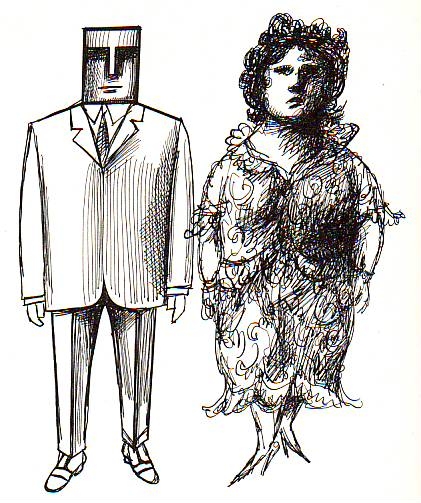|
Modern Art Film Clips 
"Upon his first arrival in Paris, Picasso met with success. It was '99... At that time he had a face of ivory, and was as beautiful as a Greek boy; irony, thought and effort have brought slight lines to the waxen countenance of this little Napoleonic man... At that time, Picasso was living the life of the provincial in Paris... He had won fame there by his portraits of actresses in the public eye. Jeanne Bloch, Otero - all the stars of the Exposition. Those paintings are priceless today; the intelligent museums have bought them." Artist Tristan Tzara (1896 - 1963) reported from Berlin for the editors at Vanity Fair on what's new in German art. With tremendous enthusiasm he explained everything that was going on throughout all the German studios - he did not hold back - every name brand is included: Schwitters, Klee, Kandinsky, Lehmbruck, Gropius and the Bauhaus. Ernest Boyd (1887 – 1946), all-around swell guy and significant literary figure in 1920s New York, took a hard look at German Expressionism and its wide influence on other Teutonic arts in the early Twenties. He paid particular attention to the German critic Hermann Bahr (1863 - 1934), who coined the term, Expressionism, and had much to say about the movement. "When Kaethe Schmidt was born in Koenigsberg in 1867, the twin fairies Pity and Indignation claimed her as their own." As a result of marriage she became Kaethe Kollwitz, and it was under this name she produced her finest works of art:
"She has been the artist of the common people, in that she has made art out of their weal and their woe and she has been content to receive understanding and approbation from them alone." A brief art review from 1946 announcing an exhibition of paintings, drawings, photographs, architectural plans and models by the modern architect Le Corbusier (né Charles-Édouard Jeanneret-Gris, 1887 – 1965) at the Mezzanine Gallery in Rockefeller Center.
"Along with Ozenfant, Le Corbusier invented Purism. The earliest painting in the collection, and the only one of that period (1920), which is familiar to art audiences as part of the permanent collection of the Museum of Modern Art."
"The art that Hitler has exiled as 'degenerate' is finding ready homes in other lands that have not yet been culturally crushed beneath the heel of Europe's twin tyrannies: Fascism and Communism. Because Hitler has embraced the calendar decoration as the supreme art form, the Museum of Modern Art in New York has been able to acquire five works that formerly were housed in prominent museums.
The article lists the purchased works.
Click here to read about the Nazi "Art Battalions"...
|
MORE ARTICLES >>> PAGE: * 1 * 2 * 3 * 4 * 5 * 6 * 7 * 8 * 9 * 10 * 11 * > NEXT |
|